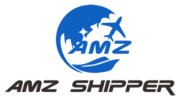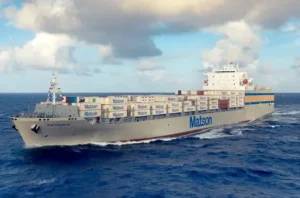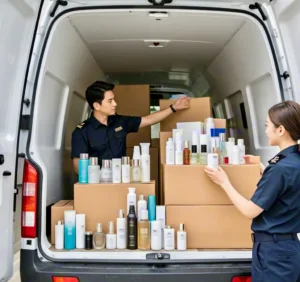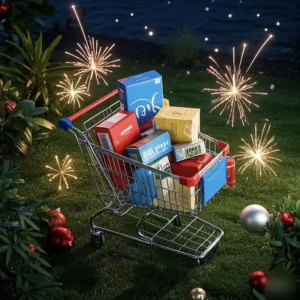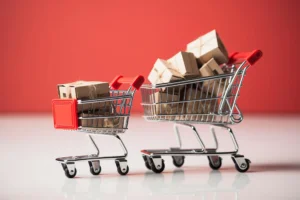For international sellers or importers, the “examination” is certainly not unfamiliar to you. No matter whether your products comply with regulations or not, no one wants to encounter customs examination, as it can be a time-consuming and costly process. In the worst case, your goods may be confiscated, resulting in both financial and material losses.
At this point, we will discuss in detail what you should do if your cargo is examined by US customs.
#1
Role of the US Customs and Border Protection (CBP):

The US Customs and Border Protection (CBP) is responsible for regulating international trade into and out of the United States. This includes collecting import tariffs and enforcing trade, customs, and immigration-related regulations. Whether your goods are shipped in a consolidated container or a full container, customs may decide to detain and inspect your shipment at random or based on suspicion.
What is Customs Examination?
Computerized Control
1. Customs classifies imported and exported goods and sets risk parameters. The higher the risk parameter of a shipment, the higher the chance it will be subject to computerized control.
2. Some customs districts set random controls for imported and exported goods based on a certain percentage due to the low risk parameters of most shipments.
Additionally, consider visiting the supplier’s facilities in person to assess their production processes and quality control measures. This will give you a better understanding of their capabilities and commitment to quality.
Shipping and Logistics
Once you have placed your order, the next step is to arrange for shipping and logistics. Depending on the supplier’s location and your shipping requirements, you may need to use a freight forwarder to handle the transportation of your products from China to Amazon’s fulfillment centers.
As a freight forwarder in China, we can assist you with this process, ensuring that your products are shipped safely and on time. We handle all the necessary customs clearance, documentation, and logistics arrangements, allowing you to focus on growing your Amazon business.
Sourcing Amazon products from Alibaba, Taobao, and 1688 requires careful research, effective communication, and a commitment to quality. By following the steps, you can successfully navigate these platforms and find reliable suppliers for your Amazon business. Remember, we are here to support you every step of the way, from searching for products to shipping them to Amazon’s fulfillment centers.
Manual Control
1.During the declaration or inspection release process of imported and exported goods, if customs officers manually review the documents and find the content of the customs declaration unclear or suspicious, they can issue a manual control instruction on the customs computer to inspect whether the goods are consistent with the documents.
2.Customs (including the Anti-Smuggling Bureau) may manually control and inspect certain imported and exported goods if they have previously detected violations or irregularities in other similar or related goods, increasing the risk parameters for those goods.
3.If customs (including the Anti-Smuggling Bureau) receives information (a tip-off) about potential issues with certain imported or exported goods, customs officers may manually control those goods or the Anti-Smuggling Bureau may issue a control inspection notification to customs field personnel to inspect the goods.
4.If a company has a history of violations or irregularities, its credit rating with customs may be lowered to C or D, and its imported and exported goods are generally subject to computerized or manual control inspection.
Types of US Customs Inspections
1. Manifest Cargo Hold:Containers with incorrect cargo holds.
2. CET Detention (A-TCET):The Counterterrorism and Enforcement Team (CET) detains containers that may contain illegal prohibited items.
3. PGA/Commercial Enforcement Detention:Participating Government Agencies (PGA), such as the Food and Drug Administration (FDA), may detain goods for enforcement purposes, usually due to compliance issues or suspected violations.

Statistical validation detention:
when the goods listed in the inventory do not match the expected weight, declaration, etc., the container will be detained.
US Customs Inspection:
When CBP marks the container for inspection, they will conduct a cargo inspection to determine whether to detain or release it.
Three types of customs inspections:
1. X-ray inspection (VACIS/NII inspection):
2. The container is scanned by X-ray machines at the dock. After reviewing the photos, the customs authorities will release the container or mark it for additional inspection.
3. On-site inspection (Tail Gate Exam): The container is inspected at the dock. Customs personnel open the container seal and conduct a physical inspection of the cargo. If everything is determined to be correct, they send the container to the inspection field for final inspection.
4. Special inspection: (Intensive Customs Exam)\nThe entire container is taken to the customs inspection site (CES), where the agent empties the packages inside the container. Then, the customs personnel prepare to conduct a comprehensive inspection of the cargo.
Necessary costs incurred:
Delay fees, including inspection fees, demurrage (per day), transit transportation fees, and management fees will be charged.
(Note: For tax-inclusive channels, there is no need to pay this fee for non-product issues.)
Friendly reminder:
To reduce the inspection rate, sellers are advised to strictly classify products according to their attributes and truthfully declare imports and exports, in order to minimize the possibility of being confiscated or fined by customs. It is important to note that there is no zero inspection rate in the market. Nobody can control the inspection rate. Therefore, sellers are advised not to take risks by mixing hazardous materials with regular cargo. Choosing a reliable logistics company is crucial. We must provide customs clearance information that matches the actual goods, refusing to conceal any information. Goods must be transported and exported in accordance with the law. At the same time, we welcome sellers to place shipments with AMZ Shipper for compliant and safe exports.
For more Amazon FBA Shipping kindly check Amazon Freight Forwarder and contact with info@amzshipper.com
